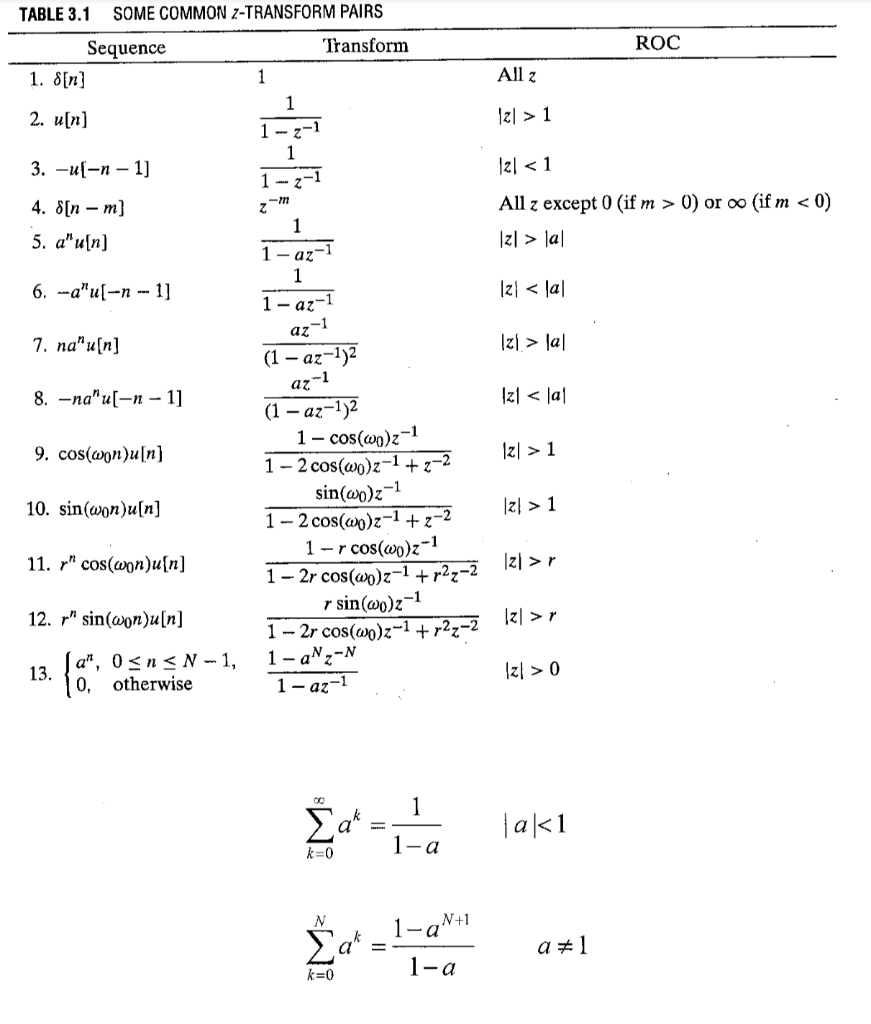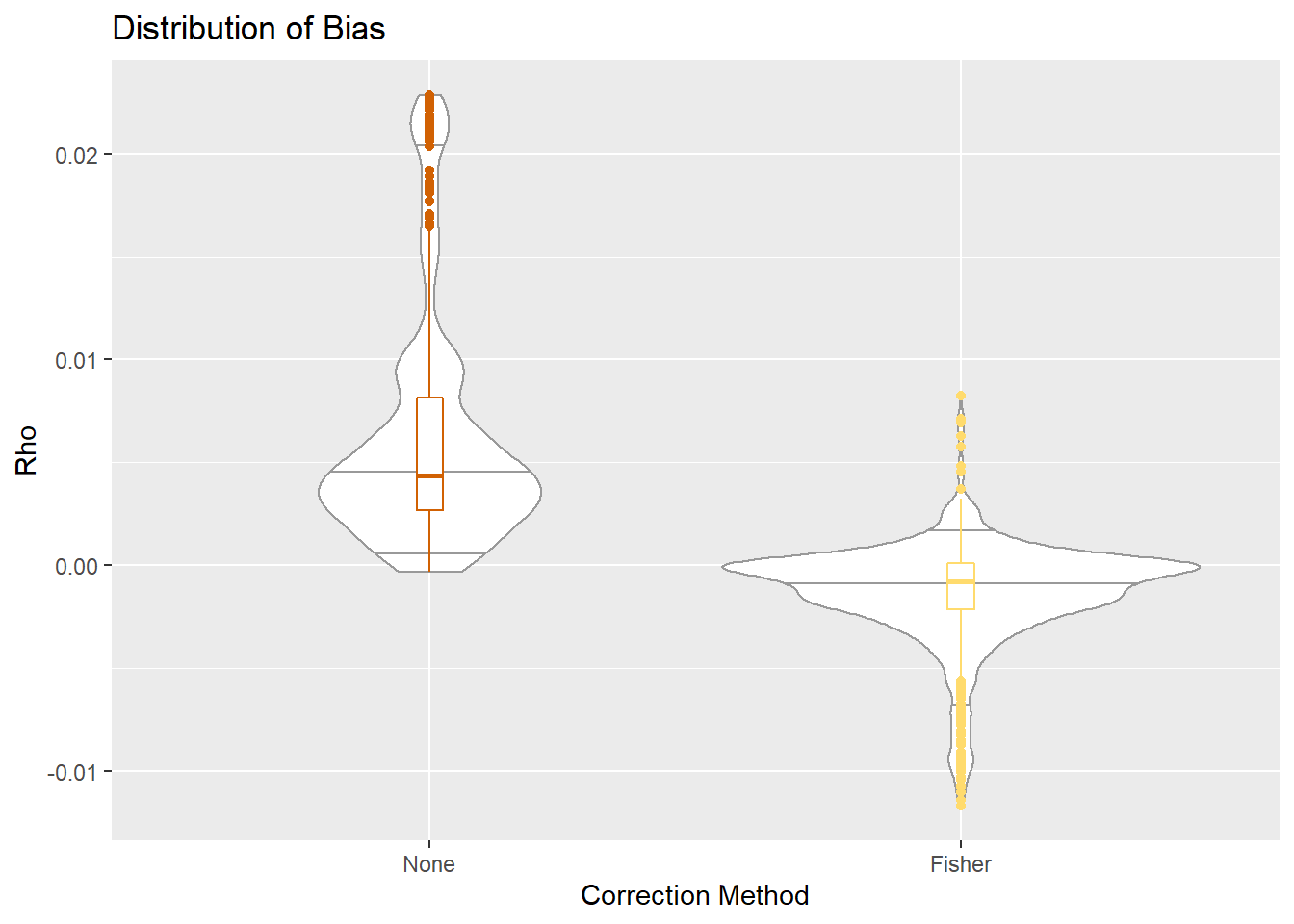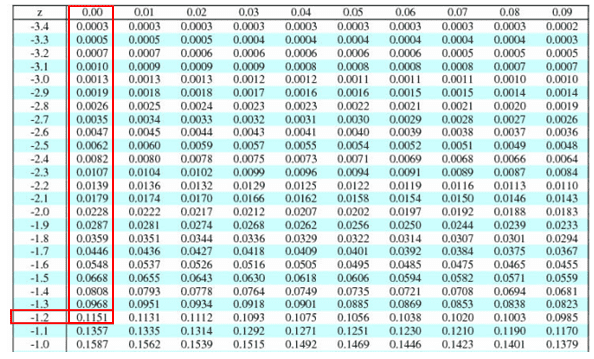Convert one table to pdf with Save As function In Excel, you can use the Save As function to handle the job. Select the table you want to convert to PDF, click File Save As Browse. 3 The inverse z-transform Formally, the inverse z-transform can be performed by evaluating a Cauchy integral. However, for discrete LTI systems simpler methods are often sufficient. 3.1 Inspection method If one is familiar with (or has a table of) common z-transformpairs, the inverse can be found by inspection. For example, one can invert the. Form, a close relationship exists between the z-transform and the discrete-time Fourier transform. For z = ejn or, equivalently, for the magnitude of z equal to unity, the z-transform reduces to the Fourier transform. More gener-ally, the z-transform can be viewed as the Fourier transform of an exponen-tially weighted sequence. Develop G(z) in a power series, from which the pi can be identified as the coefficients of the zi. The coefficients can also be calculated by derivation pi = 1 i! DiG(z) dzi z=0 = 1 i! By inspection: decompose G(z) in parts the inverse transforms of which are known; e.g. The partial fractions 3. By a (path) integral on the.
- Signals and Systems Tutorial
- Signals and Systems Resources
Z Transform Table Pdf Excel
- Selected Reading

Z-Transform has following properties:
Linearity Property
If $,x (n) stackrel{mathrm{Z.T}}{longleftrightarrow} X(Z)$
and $,y(n) stackrel{mathrm{Z.T}}{longleftrightarrow} Y(Z)$
Then linearity property states that
$a, x (n) + b, y (n) stackrel{mathrm{Z.T}}{longleftrightarrow} a, X(Z) + b, Y(Z)$
Time Shifting Property
If $,x (n) stackrel{mathrm{Z.T}}{longleftrightarrow} X(Z)$
Then Time shifting property states that
$x (n-m) stackrel{mathrm{Z.T}}{longleftrightarrow} z^{-m} X(Z)$
Multiplication by Exponential Sequence Property
If $,x (n) stackrel{mathrm{Z.T}}{longleftrightarrow} X(Z)$
Then multiplication by an exponential sequence property states that
$a^n, . x(n) stackrel{mathrm{Z.T}}{longleftrightarrow} X(Z/a)$
Time Reversal Property
If $, x (n) stackrel{mathrm{Z.T}}{longleftrightarrow} X(Z)$
Then time reversal property states that

$x (-n) stackrel{mathrm{Z.T}}{longleftrightarrow} X(1/Z)$
Differentiation in Z-Domain OR Multiplication by n Property
If $, x (n) stackrel{mathrm{Z.T}}{longleftrightarrow} X(Z)$
Then multiplication by n or differentiation in z-domain property states that
$ n^k x (n) stackrel{mathrm{Z.T}}{longleftrightarrow} [-1]^k z^k{d^k X(Z) over dZ^K} $
Convolution Property
If $,x (n) stackrel{mathrm{Z.T}}{longleftrightarrow} X(Z)$
and $,y(n) stackrel{mathrm{Z.T}}{longleftrightarrow} Y(Z)$
Then convolution property states that
$x(n) * y(n) stackrel{mathrm{Z.T}}{longleftrightarrow} X(Z).Y(Z)$
Correlation Property
If $,x (n) stackrel{mathrm{Z.T}}{longleftrightarrow} X(Z)$
and $,y(n) stackrel{mathrm{Z.T}}{longleftrightarrow} Y(Z)$

Then correlation property states that
$x(n) otimes y(n) stackrel{mathrm{Z.T}}{longleftrightarrow} X(Z).Y(Z^{-1})$
Initial Value and Final Value Theorems
Initial value and final value theorems of z-transform are defined for causal signal.
Initial Value Theorem
For a causal signal x(n), the initial value theorem states that
$ x (0) = lim_{z to infty }X(z) $
This is used to find the initial value of the signal without taking inverse z-transform
Final Value Theorem
For a causal signal x(n), the final value theorem states that
$ x ( infty ) = lim_{z to 1} [z-1] X(z) $
This is used to find the final value of the signal without taking inverse z-transform.
Z Transform Properties Table
Region of Convergence (ROC) of Z-Transform
The range of variation of z for which z-transform converges is called region of convergence of z-transform.
Properties of ROC of Z-Transforms
ROC of z-transform is indicated with circle in z-plane.
ROC does not contain any poles.
If x(n) is a finite duration causal sequence or right sided sequence, then the ROC is entire z-plane except at z = 0.
If x(n) is a finite duration anti-causal sequence or left sided sequence, then the ROC is entire z-plane except at z = ∞.
If x(n) is a infinite duration causal sequence, ROC is exterior of the circle with radius a. i.e. |z| > a.
If x(n) is a infinite duration anti-causal sequence, ROC is interior of the circle with radius a. i.e. |z| < a.
If x(n) is a finite duration two sided sequence, then the ROC is entire z-plane except at z = 0 & z = ∞.
The concept of ROC can be explained by the following example:

Example 1: Find z-transform and ROC of $a^n u[n] + a^{-}nu[-n-1]$
$Z.T[a^n u[n]] + Z.T[a^{-n}u[-n-1]] = {Z over Z-a} + {Z over Z {-1 over a}}$
$$ ROC: |z| gt a quadquad ROC: |z| lt {1 over a} $$
The plot of ROC has two conditions as a > 1 and a < 1, as you do not know a.
In this case, there is no combination ROC.
Here, the combination of ROC is from $a lt |z| lt {1 over a}$
Hence for this problem, z-transform is possible when a < 1.
Causality and Stability
Causality condition for discrete time LTI systems is as follows:
A discrete time LTI system is causal when
ROC is outside the outermost pole.
In The transfer function H[Z], the order of numerator cannot be grater than the order of denominator.

Z Transform Pairs
Stability Condition for Discrete Time LTI Systems
A discrete time LTI system is stable when
its system function H[Z] include unit circle |z|=1.
all poles of the transfer function lay inside the unit circle |z|=1.
Z-Transform of Basic Signals
Table Of Z Transforms
| x(t) | X[Z] |
|---|---|
| $delta$ | 1 |
| $u(n)$ | ${Zover Z-1}$ |
| $u(-n-1)$ | $ -{Zover Z-1}$ |
| $delta(n-m)$ | $z^{-m}$ |
| $a^n u[n]$ | ${Z over Z-a}$ |
| $a^n u[-n-1]$ | $- {Z over Z-a}$ |
| $n,a^n u[n]$ | ${aZ over |Z-a|^2}$ |
| $n,a^n u[-n-1] $ | $- {aZ over |Z-a|^2}$ |
| $a^n cos omega n u[n] $ | ${Z^2-aZ cos omega over Z^2-2aZ cos omega +a^2}$ |
| $a^n sin omega n u[n] $ | $ {aZ sin omega over Z^2 -2aZ cos omega +a^2 } $ |
